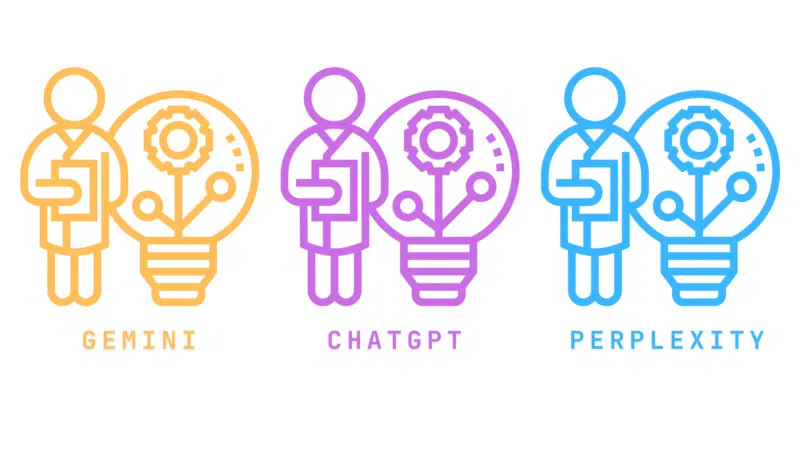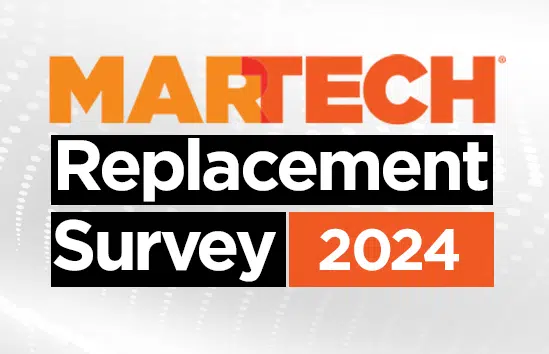
Over the past weeks, I spent hours in front of the TV watching endless commercials punctuated with short periods of sports coverage. Is it just me, or were there more commercials than usual during these Olympic Games?
I saw the Google Gemini and Microsoft Copilot commercials what seemed like a thousand times. I was completely sucked into the vision of typing in a simple request and Gemini or MS Copilot creating a meeting summary, action plan and a visually compelling presentation all with the click of a button.
I regularly use generative AI to polish content, assist with writer’s block and help with creating presentations (I’m a big fan of gamma.app) and have found it both effective and a great timesaver. Recently, I’ve begun using it for research-oriented tasks and have found it to be really helpful in two key areas: product discovery and company/product positioning. In both cases, not only does it save me a tremendous amount of time, but the end results are better than what I normally achieve doing the work manually.
When I’m using generative AI for research work, I’ve found that I get the best results by using multiple products simultaneously. I typically have tabs open for Gemini, ChatGPT and Perplexity and work across all three simultaneously. I haven’t used Copilot yet, so don’t currently have that on my list, but it is certainly another viable option. It doesn’t matter which tools you choose to use; what’s important is to use multiple tools to ensure optimal information quality and make it easy to identify hallucinations.
Product discovery
It’s no secret that the MarTech landscape contains a huge number of products. The recent MartechMap shows some 14,000. It’s unlikely that this will shrink any time soon; indeed, it is likely to keep growing as new categories and products emerge. Finding the right products for a martech stack is hugely challenging for several reasons, two of which directly relate to product discovery.
Vendors are notoriously bad at providing a concise description of what their product is and does. This makes it difficult for a technology buyer to easily hone in on a list of products that might be of interest.
In fairness, some are better than others; Knak is a good example. It makes it very clear on its homepage what its product does. But for most, you need to triangulate feature descriptions against solution overviews and company profile information, which is time-consuming and frequently frustrating.
Users tend to think in terms of use cases, and vendors generally think in terms of features, which can cause a complete disconnect.
Generative AI tools are particularly good at synthesizing information and connecting dots, which is helpful in triangulating information and overcoming the use case/feature disconnect in product discovery. I approach product discovery as follows:
Generation of an initial query
I start by creating a requirements narrative that is often a mix of use case information and features. For the initial query, I don’t worry about the quality of the request or optimizing the query. I consider it a starting point and try to put as much relevant information into the query as I can.
Query submission
I submit the same query to multiple (at least three) AI tools.
Review and refine
After the initial submission, it generally becomes clear whether I’m heading in the right direction or not. If I am, I follow up with additional query details until I get to either a product category to explore or a set of products to evaluate if I’m not heading in the right direction.
Side note: I learned very quickly not to use acronyms in my queries because generative AI tools make a random assessment of what they represent and, in acting on that, return completely bogus information. I keep refining the original query until I get meaningful responses. As you experiment with queries, some AI tools produce better results than others; sometimes an AI tool will even respond with an “I can’t do that” message, which is another reason to use multiple tools in parallel.
Identify
If your initial objective was to identify a product category, and you’ve done that, the next step is to develop a list of vendors to evaluate. At this stage, I recommend keeping the list broad to ensure you don’t eliminate a good fit too early.
Narrow
With a list of vendors in hand, you can now ask the following questions:
- “Identify the platform (e.g., email platform) features for each of these vendors: [list of vendors].”
- “Identify the use cases for the platforms (e.g., email platforms) of each of these vendors: [list of vendors].”
- “Identify the value proposition for the platforms (e.g., email platforms) of each of these vendors: [list of vendors].”
- “Identify the products that the platforms (e.g., email platform) of each of these vendors integrate with: [list of vendors].”
Note: You may find that some tools do well with a list of vendors and some do better looking at one vendor at a time.
The goal is narrowing the list of product possibilities to a manageable few, not necessarily identifying the very best product for your environment. I’m sure that someday these tools will develop the capabilities to get you to precisely the right product, but for now, you should count it as a win if they can get you to a list of less than 10 vendors to evaluate. With a narrow list, you can look at feature details, pricing, effort to integrate into your environment, customer reviews, security and data compliance and operations complexity.
Company/product positioning
I grew up as a marketer in high-tech startups and worked for several companies from inception to IPO or acquisition. Positioning (company, product, competitive) was my superpower. I’d like to think it is something I am particularly talented at. Still, the truth is that most of my success in this area came from a willingness to do the tedious, manual (and let me emphasize boring) work necessary to create a highly detailed view of the market landscape, which, if done well, showcases gaps and opportunities, and points the way towards a defensible position.
To create a detailed view of the landscape entailed:
- Reading every research paper, I could about the market and pulling out salient information.
- Reading and synthesizing as many news articles as I could find about the market and its key players.
- Digging into every vendor’s website and social channels to uncover:
- Their positioning and value proposition (not always easy to discern).
- Their marketing strategy (e.g., tone, frequency of communication, event appearances, and how they talked about competition and the market).
At the end of this exercise, which sometimes took weeks and weeks, I’d be left with more than 100 pages of information to synthesize and analyze, ultimately leading me to create a data-driven, defensible and compelling position.
Generative AI is a gift to this exercise. Generative AI can easily collect information and synthesize the information it uncovers, making it easy to identify a vendor’s positioning and value proposition.
I’m currently working through a fascinating exercise within a specific martech category. My hypothesis is that we would be an effective partner to a number of the vendors in this category, but there seems to be a disconnect in how the vendors in this category position themselves, define their target audience and describe their value proposition. It all seems very schizophrenic. In this instance, I had a very good market research report to start with that identified the key functionality of the category and the key players, so I didn’t have to use generative AI to assist with defining it. With that in hand, I asked my generative AI research assistants to give me the following information for each vendor:
- How they define their market category.
- Their target audience.
- Their value proposition.
In a category of more than 20 vendors, this exercise would have taken me days without generative AI. I pulled all the genAI responses into a single document with a plan to leverage genAI to synthesize the collected information. In this case, I didn’t have to take that final step because the positioning disconnect I sought jumped out of the raw information.
Half the vendors in the category are positioning their product as a tool for marketing operations with capabilities that reach across all marketing functions. The other half (with the same features) are positioning their product as a tool for campaign managers with capabilities (same set as the other group) applied specifically for optimizing campaign performance. One category but two completely bifurcated approaches to the market — fascinating.
As it turns out, half of this market has good potential for us, and the other half does not. Though I have the information I need, it does seem like this is a market category that needs some segmentation or, at the very least, clarification, but that’s for someone else to address. The critical point is that genAI makes acquiring the information needed to make good positioning decisions much easier and quicker. It eliminates more than 80 percent of the manual, time-consuming work so you can focus on the more interesting work of analyzing the information and defining a path forward for your company or product.
Dig deeper: Why traditional marketing systems can’t keep up with AI
I continue to be bullish about generative AI. We continue to see new products and improved capabilities for existing products. There’s still a lot of innovation ahead of us. My personal challenge is to be more proactive with the use of generative AI and to commit to experimenting with various tasks. My use of generative AI is generally driven by those moments of thinking, “There has to be an easier way to do this,” when I’m already working on a big project instead of it being my first thought. I’m working on that.
I’m pleased to report that I solidly internalized the information from the Gemini and Copilot commercials and finally figured out how to fast forward with Fubo, greatly improving my sports-to-commercial ratio — making the remainder of the Olympics really enjoyable.
Contributing authors are invited to create content for MarTech and are chosen for their expertise and contribution to the martech community. Our contributors work under the oversight of the editorial staff and contributions are checked for quality and relevance to our readers. The opinions they express are their own.
























































![Key Metrics for Social Media Marketing [Infographic] Key Metrics for Social Media Marketing [Infographic]](https://www.socialmediatoday.com/imgproxy/nP1lliSbrTbUmhFV6RdAz9qJZFvsstq3IG6orLUMMls/g:ce/rs:fit:770:435/bG9jYWw6Ly8vZGl2ZWltYWdlL3NvY2lhbF9tZWRpYV9yb2lfaW5vZ3JhcGhpYzIucG5n.webp)



















